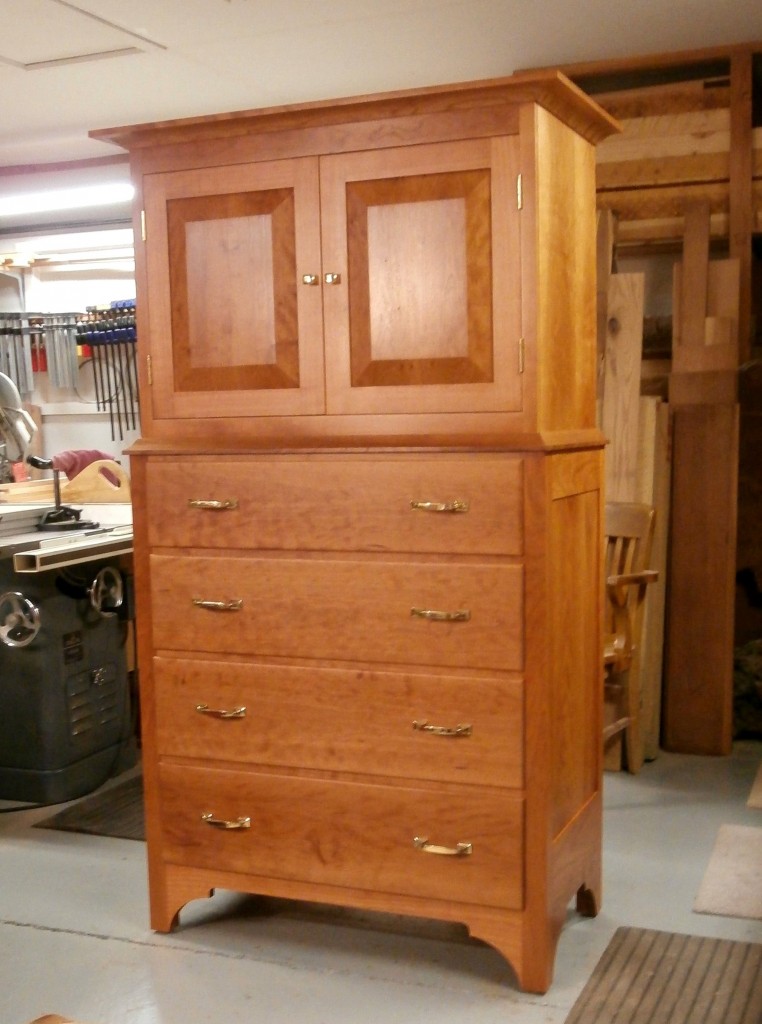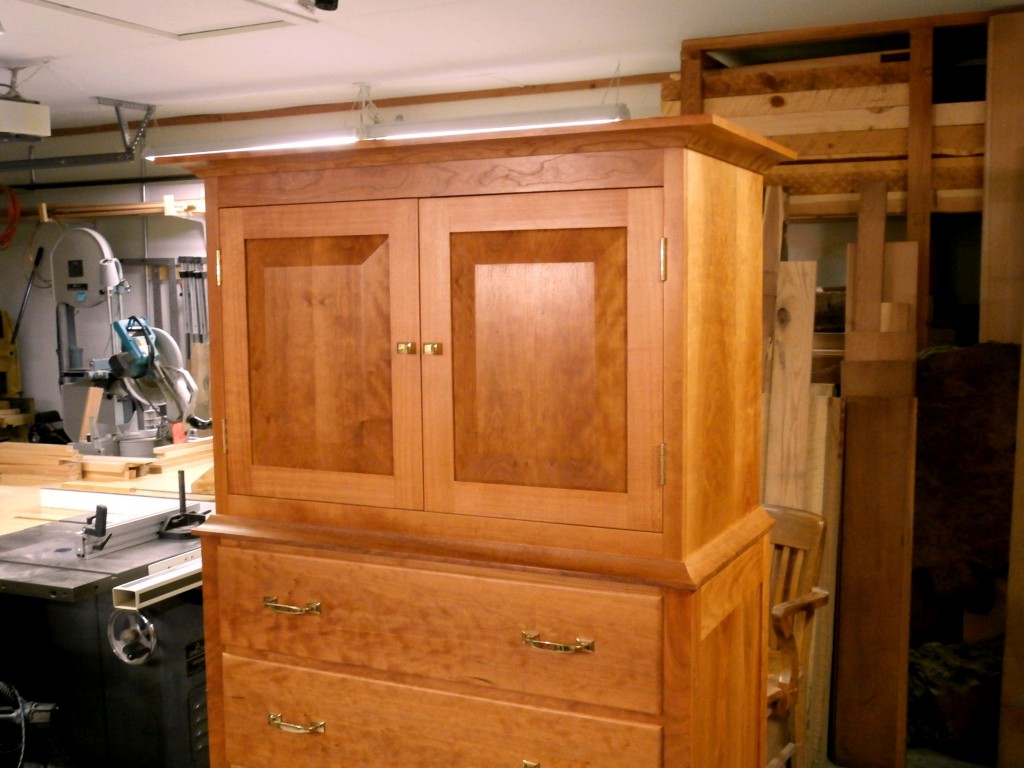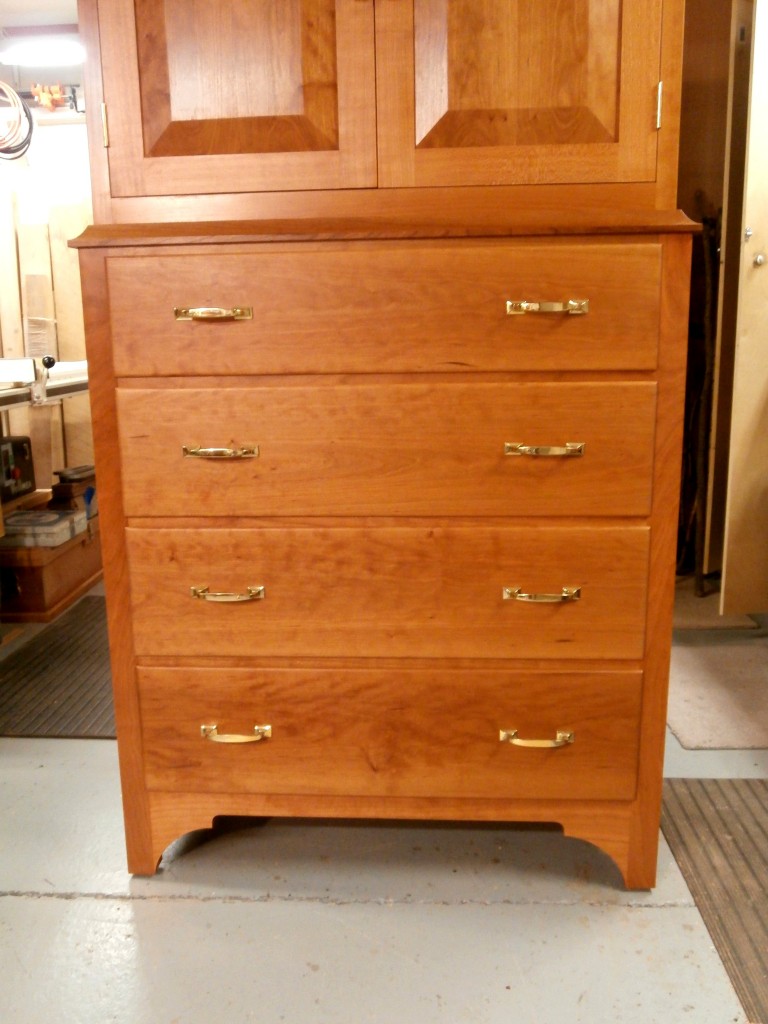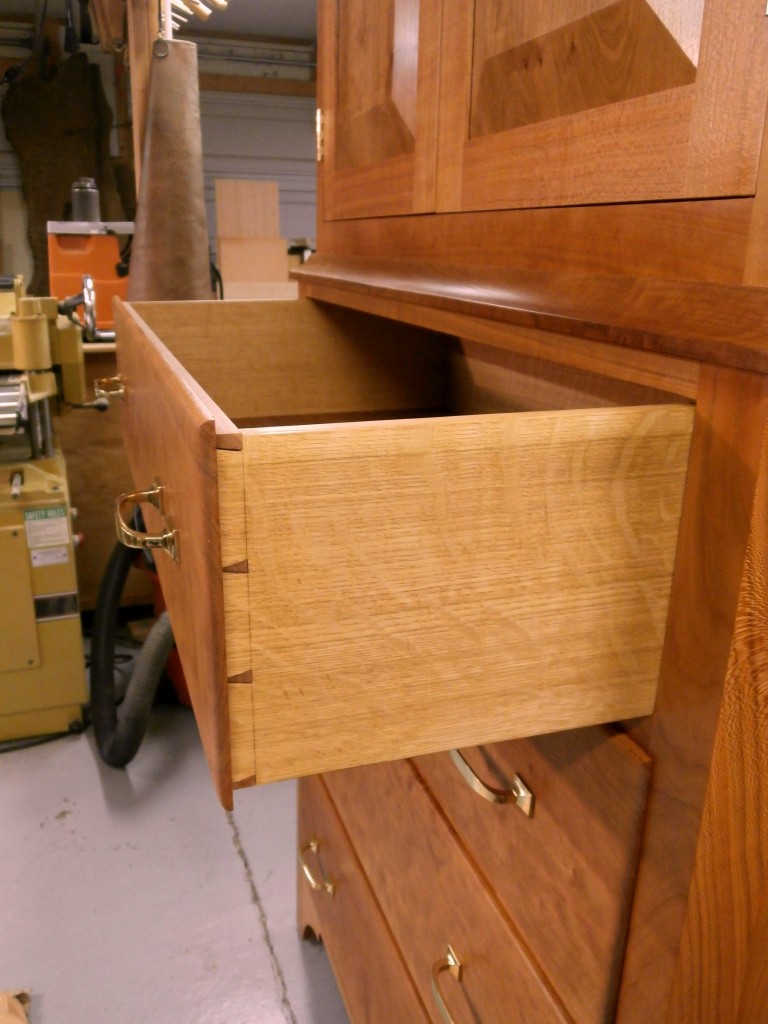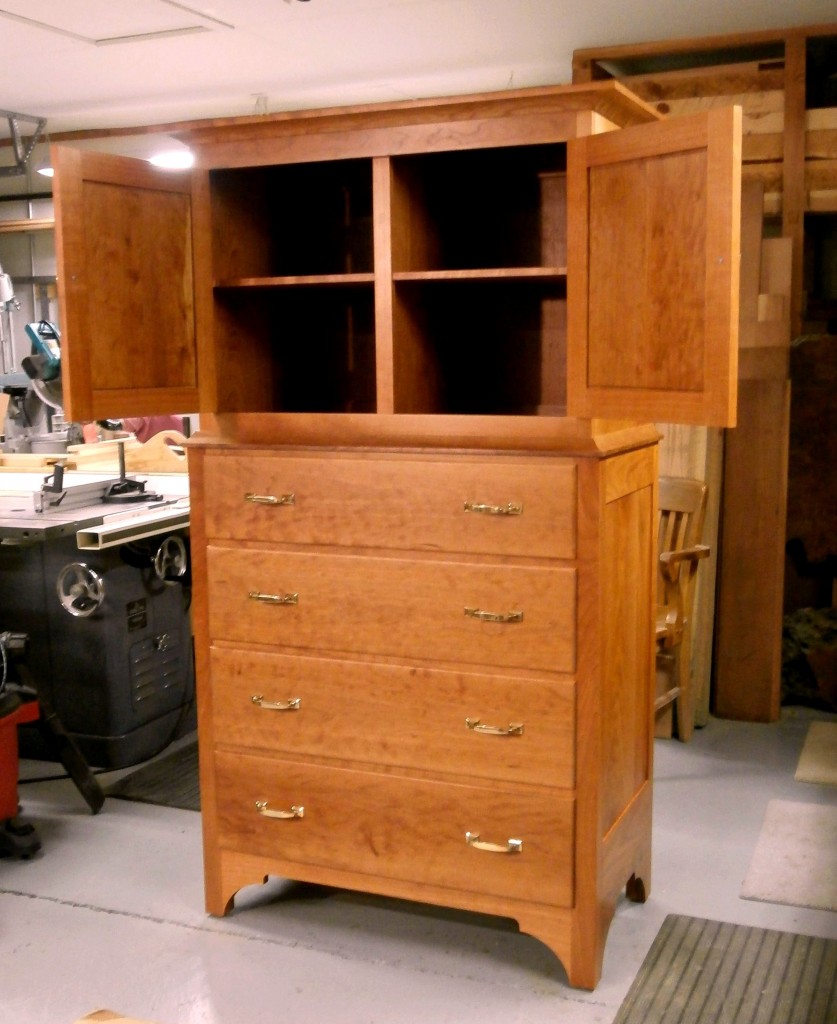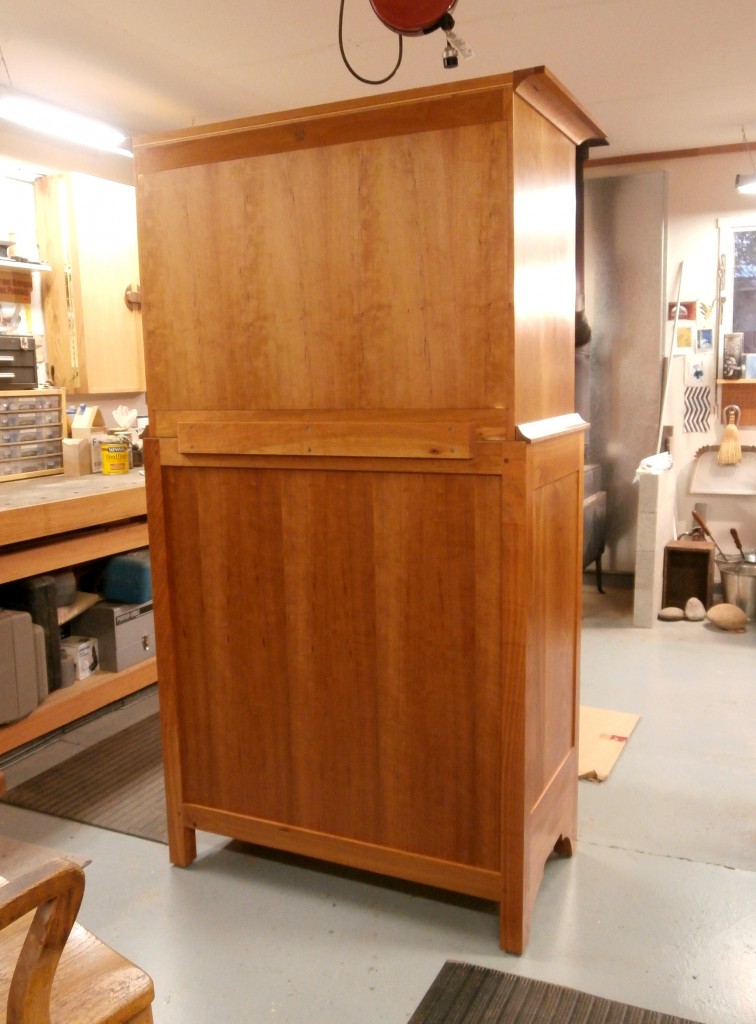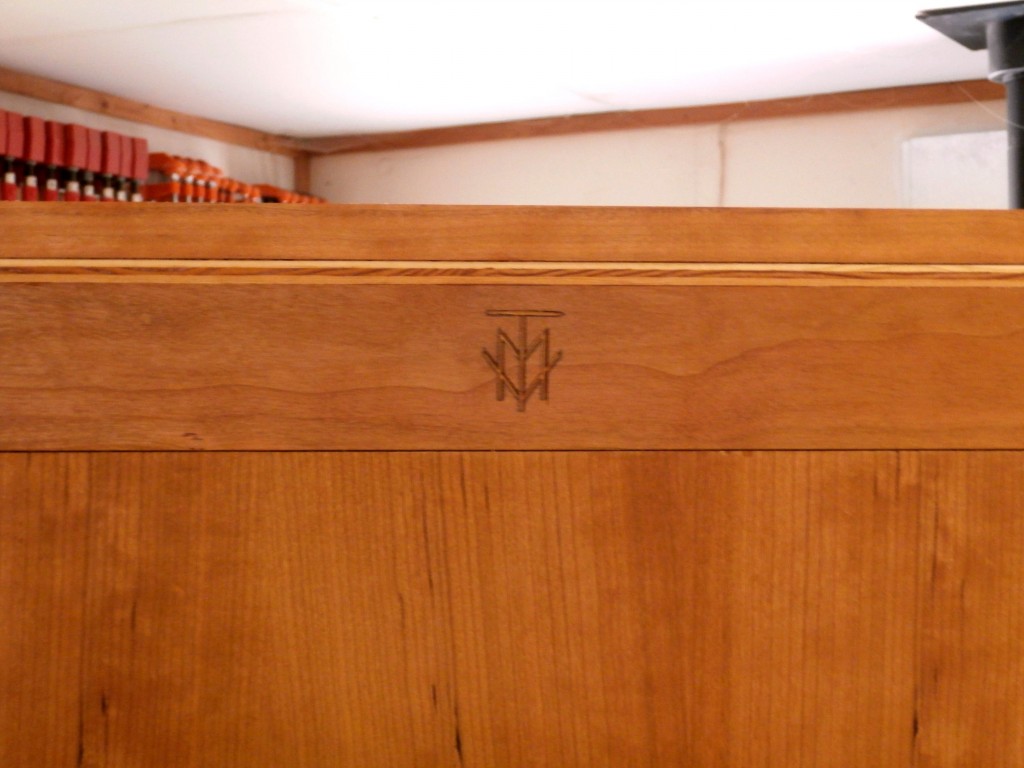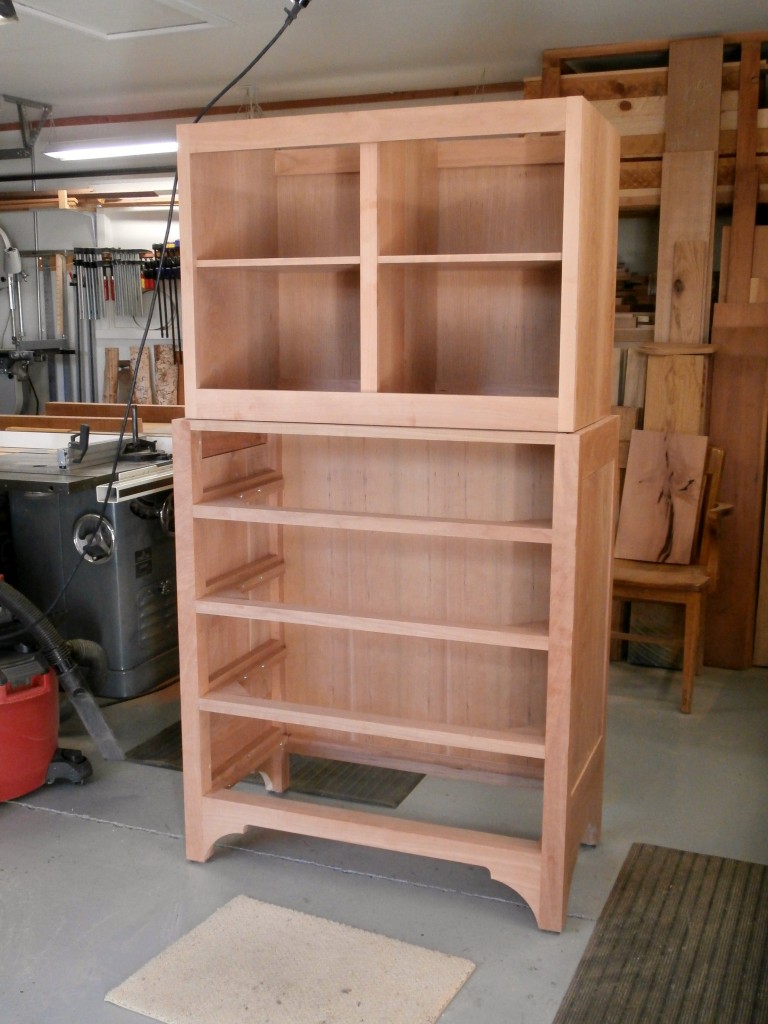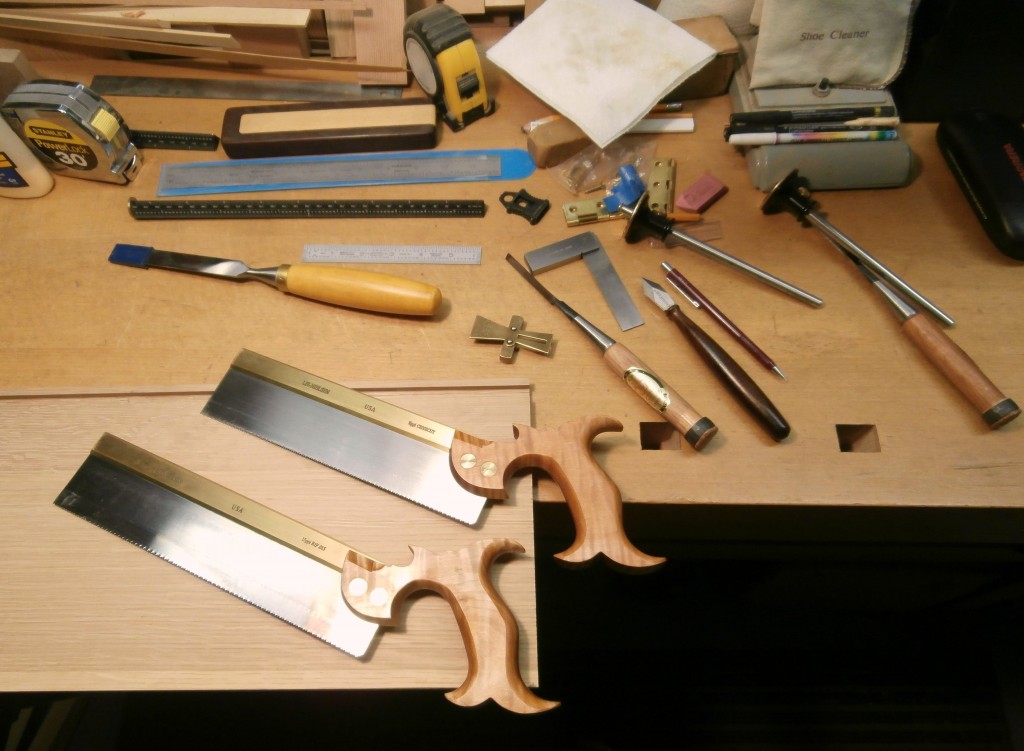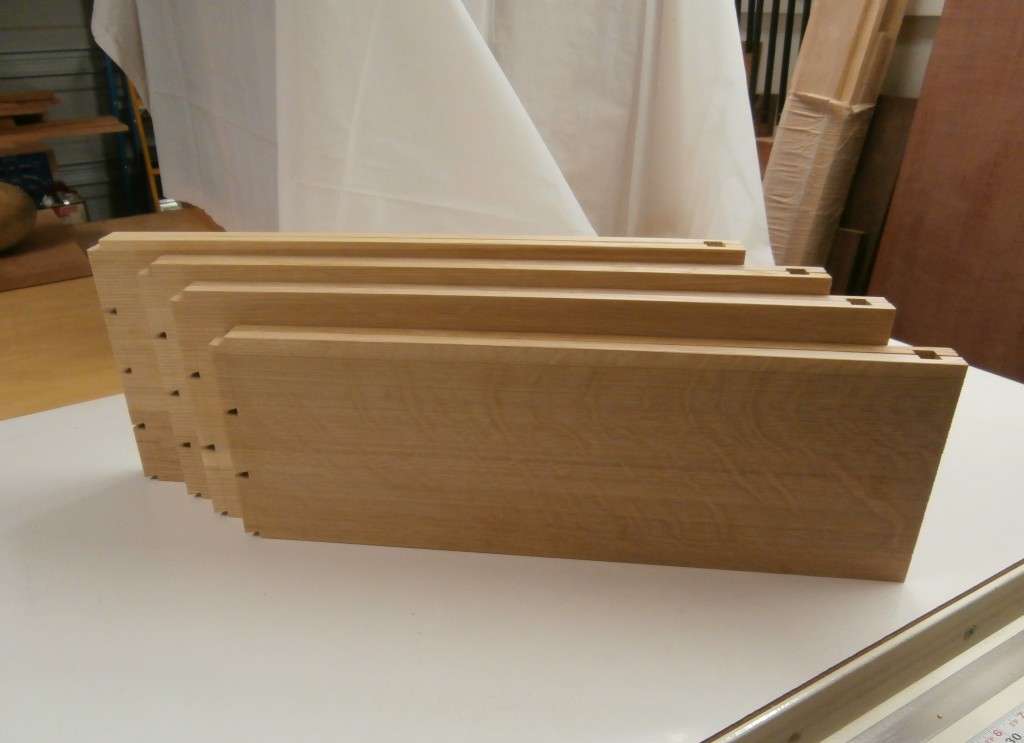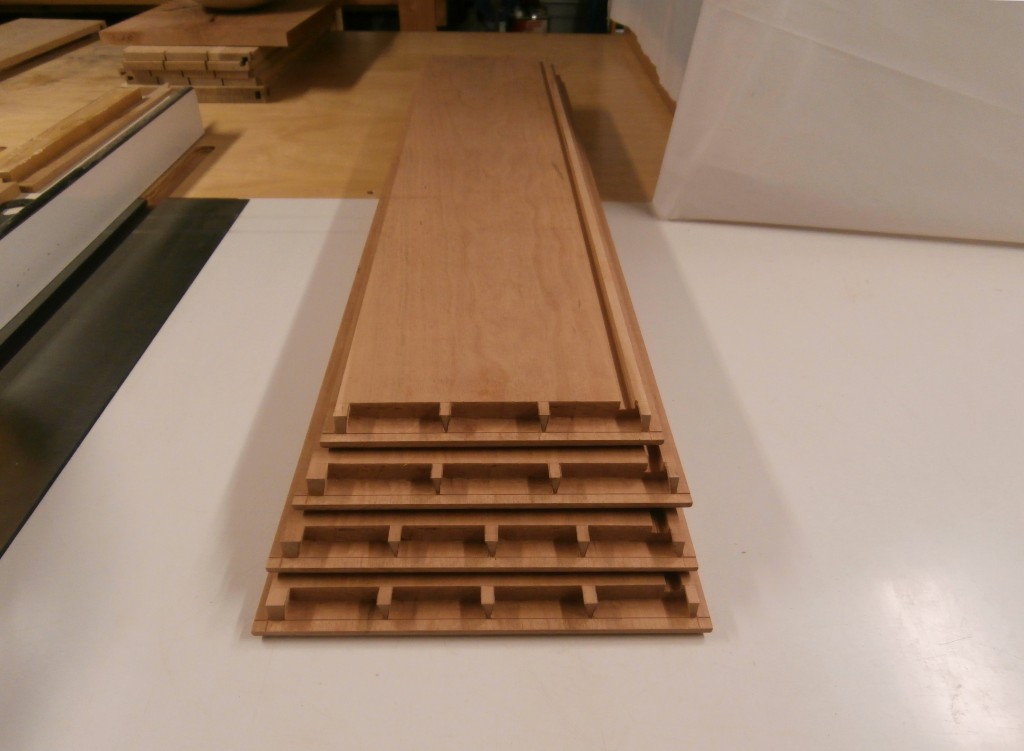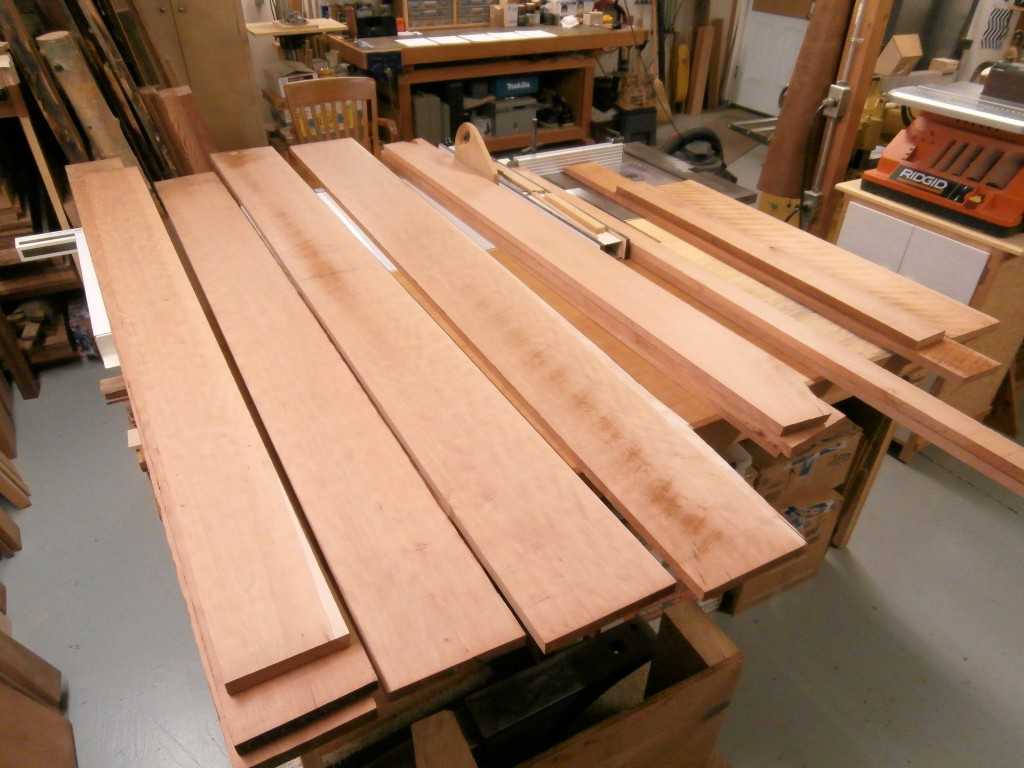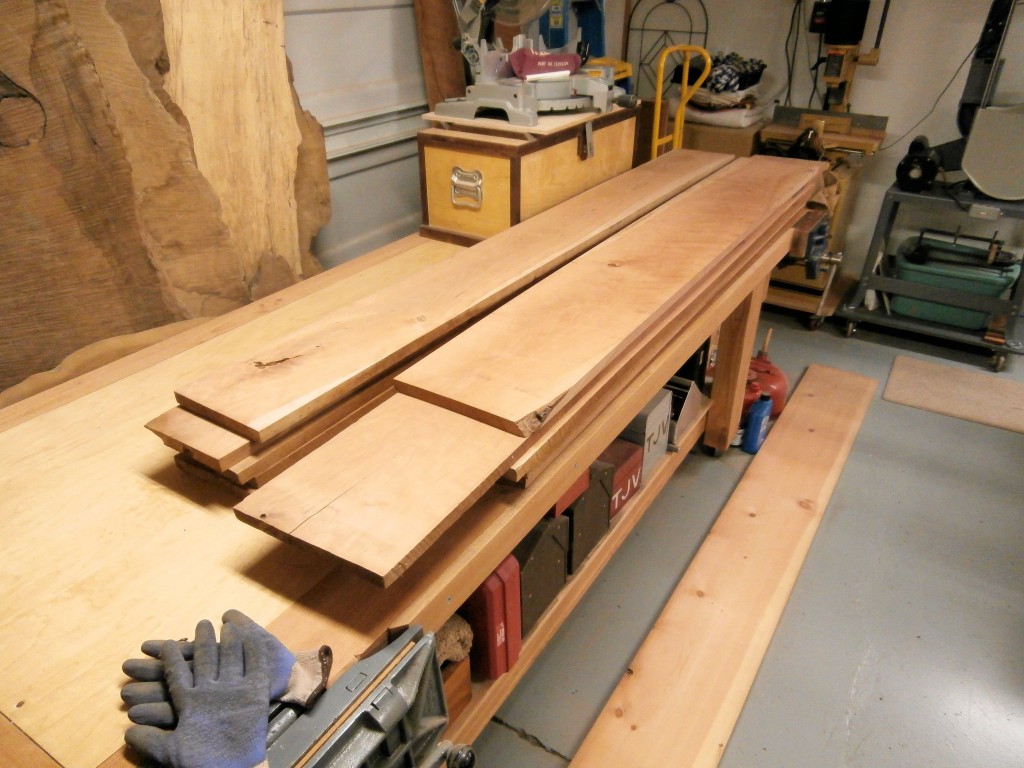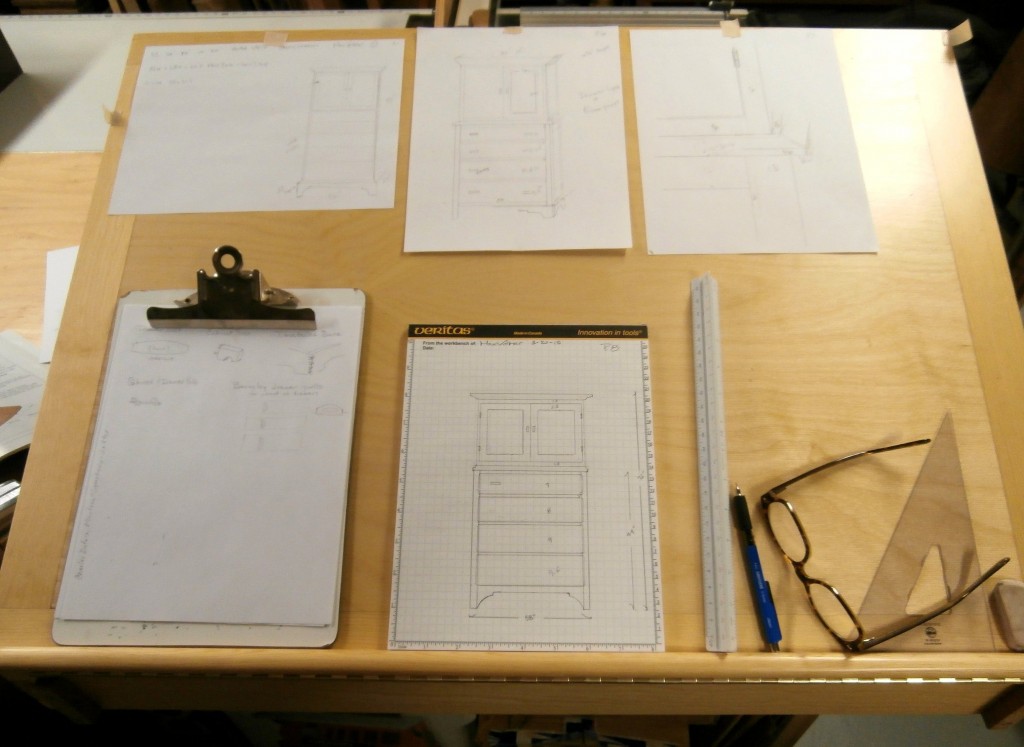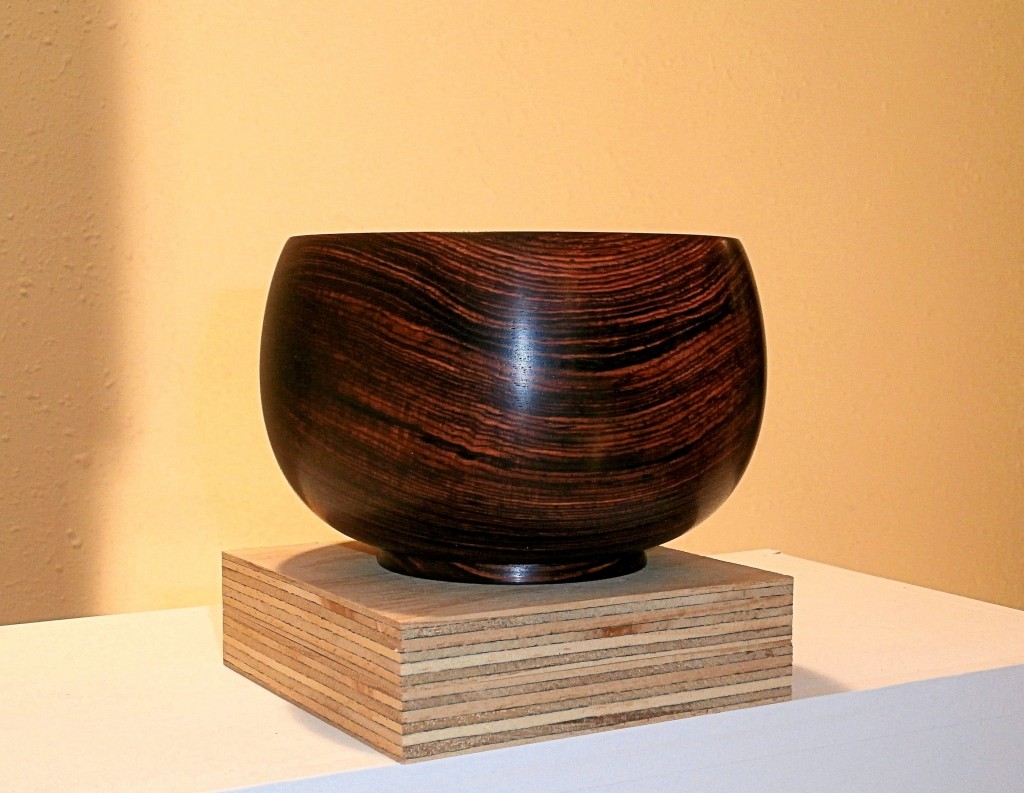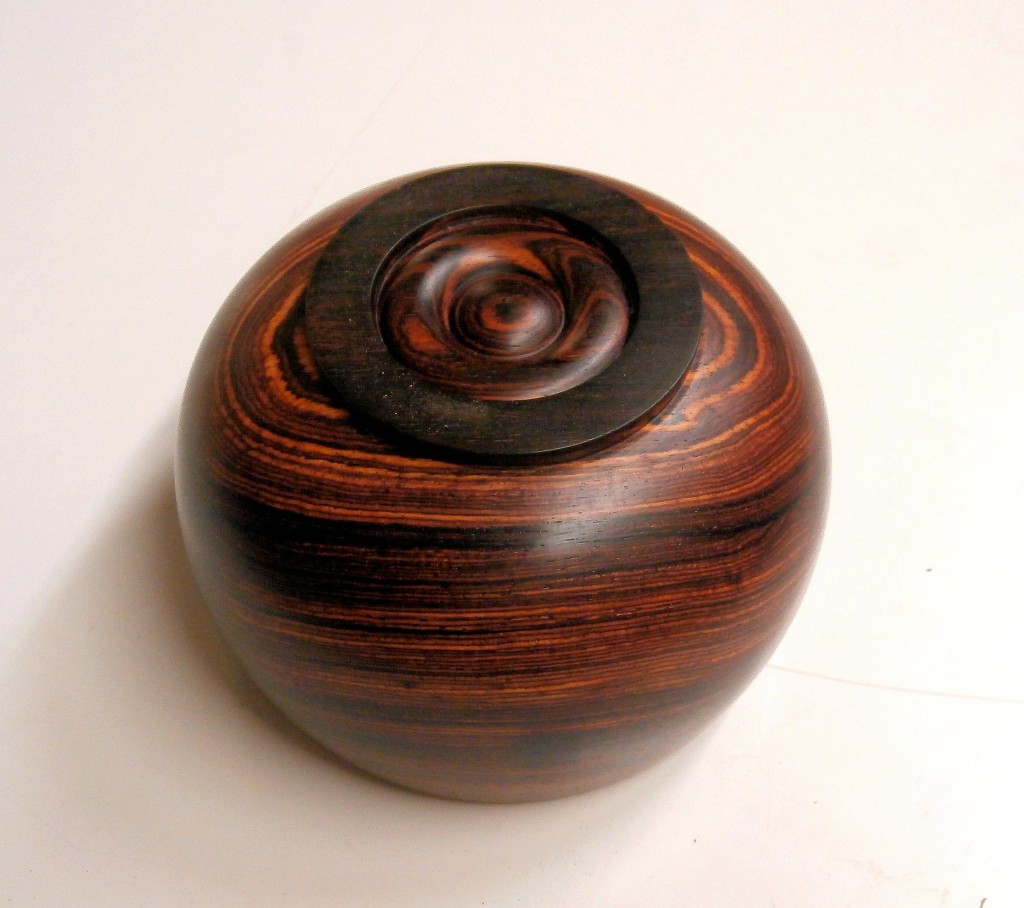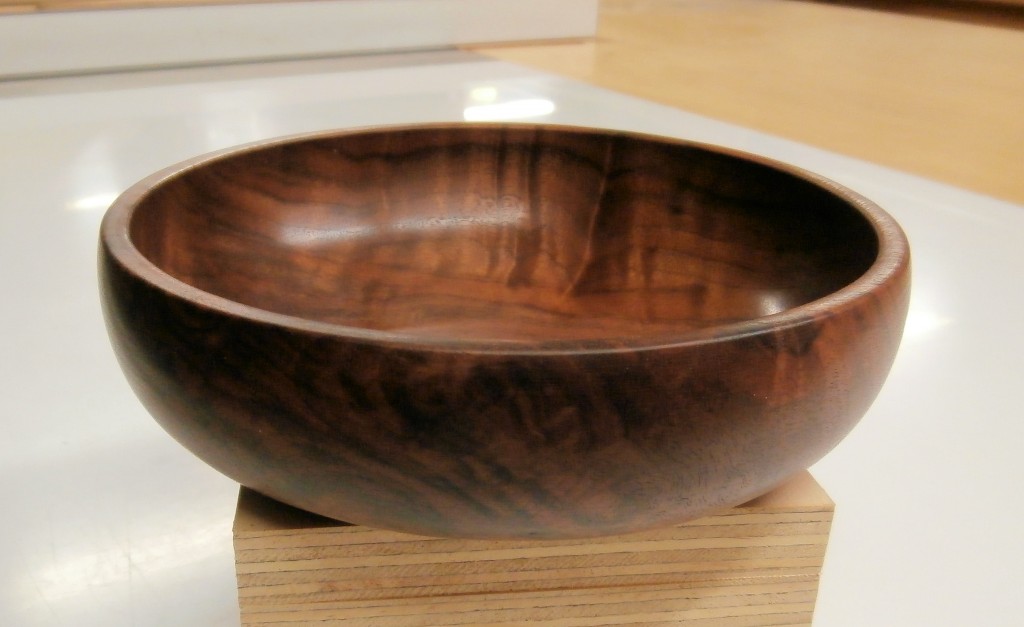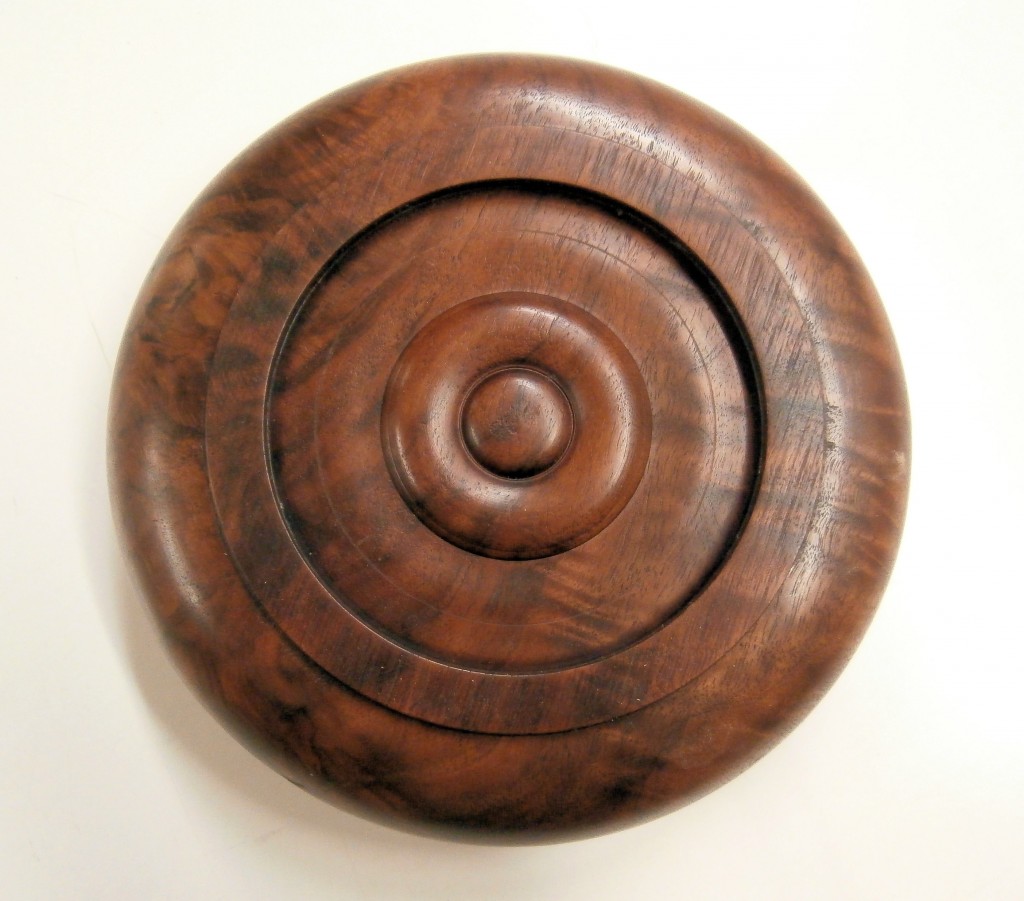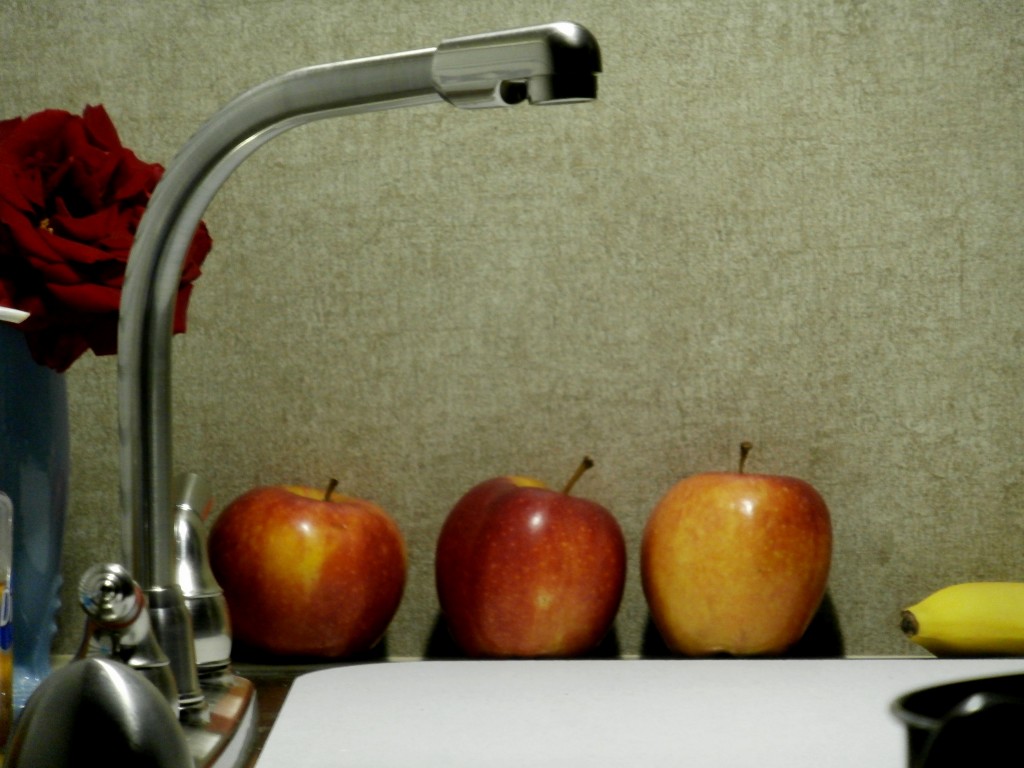
All posts by Max Vollmer
Finished!!
I finished this tall chest in late May. The primary wood is American Black Cherry, about 90% of it from one tree. Cherry plywood was used for drawer bottoms and the back panels, while quarter-sawn white oak was used for the drawer sides and backs. The entire chest, inside and out, has three coats of hand-rubbed Watco Danish Oil (Natural). The solid brass drawer pulls (called “bridge” pulls) and knobs for the cabinet doors came from Crown City Hardware in Pasadena, CA. The hand-cast, solid brass hinges are from Horton Brasses in Cromwell, CT. From concept drawings to completion, this took me about 160 hours. (Click on any photo to enlarge.)
The chest is 72 inches tall, 34 inches wide, and 22 inches front to back.
Each panel in the cabinet doors is made up of a book-matched pair of boards which were beveled first on the table saw, and then finished with a hand plane. The door frames are quarter-sawn cherry with the rails tenoned into the stiles. The transition molding and the crown molding were cut on the table saw as coves and then split into the quarter round profile. The outer edge of the crown molding was extended with solid stock.
The drawer fronts are graduated from bottom to top (9.5″, 9″, 8.5″, 7.5″) and each drawer front is one solid piece of American Black Cherry.
Quarter-sawn, Eastern white oak was chosen for its stability in the drawer sides and backs. The half-blind dovetails were all hand cut with a 14 ppi saw and chisel.
Shelves and center divider are solid cherry.
The upper section of the chest is a separate unit and can be removed for transport. Back panels for the upper and lower sections are 3/8″ cherry plywood (cherry both sides).
The “Makers Mark.”
Cherry Dresser Progress
This is where the basic frame work of the dresser stood on April 27. Since then I have fabricated the raised panel doors for the upper section, the drawer fronts and sides, and drawer backs and bottoms for the lower section. I am gluing up the drawers today and hope to mount the hinged panel doors for the upper case as well. (Click on any image to enlarge)
These are most, but not all, of the tools required for marking and cutting the hand-cut, half-blind dovetails that are used to join the drawer sides to the drawer fronts.
These are the four pairs of quarter-sawn white oak drawer sides for the four, graduated size drawers. The dovetails are hand-cut, the rabbets and the dadoes are cut on the table saw for the drawer bottoms and drawer backs.
These are the four cherry drawer fronts with all dovetails cut to mate with the drawer sides, and the dadoes for the drawer bottoms are cut as well.
This is how a drawer front and drawer sides come together. Note that the dadoes on both the drawer sides and drawer front line up to accommodate the drawer bottom.
The two pictures above show one of the raised panel doors for the upper section before assembly, and then the pieces glued and clamped in place. The frame pieces are glued together, but the panel floats free in dadoes that run all the way around the inside of the frame. This is so the wide, flat-sawn panel boards can expand or contract with changes in ambient humidity without stressing or cracking the frame. The door frame pieces are cut from quarter-sawn cherry and are joined together with mortise and tenon joints. The door panel is made up of two “book-matched” cherry boards arranged vertically and edge glued before the beveled edges are crafted.
Huapango by José Pablo Moncayo – Alondra de la Para & L’Orchestra de Paris
José Pablo Moncayo is one of the most important of the 20th century Mexican classical composers. His composition, Huapango, is brilliantly performed here by the Paris Orchestra under the baton of Mexican American conductor, Alondra de la Parra. I would go to a concert just to see de la Parra conduct in her unique and spirited style. [Click on Full Screen icon in the lower right corner to best appreciate the video]
Cherry Dresser, Lumber Prep
I finished 9 pages of scaled, detailed drawings for my tall case (72″ high) cherry dresser yesterday. Today I planed about 100 board feet of my clear, air-dried cherry lumber. Current retail price for American Black Cherry lumber is approx. $7.00 per board foot; up to $10.00 per board foot for extra wide. [one board foot = 12″ by 12″ by 1″ thick] The widest boards are 13 inches wide and all are planed, both sides, to a finished dimension of 7/8ths inch thick. So although I paid $1.00 per board foot for rough cut lumber direct from the West Virginia saw mill years ago, the present value of the boards in these two pictures is well over $1,000. After planing the lumber, I then mapped out what parts of the dresser will come from which boards. While all the casework will be cherry, the drawer sides/backs will be hand dovetailed, solid white oak, and I will custom make the pulls from pure black, African ebony. By the time I’m finished, I expect to have upwards of 120 hours labor in the finished piece, and although I will never sell it, the retail value would be in the $4,000~$6,000 range depending on the market.
Plans Progressing
Goncalvo Alves
I finished this 6″ W x 4.5″ H bowl today. It’s Goncalvo Alves, a heavy and very dense tropical hardwood. I’m happy with the result, although turning it was a lengthy and tedious process. This small bowl weighs 4~5 pounds, at least double what black walnut would weigh. I bought the bowl blank 20 years ago and today I would choose native hardwoods exclusively. Like all my bowls thus far, it’s finished with pure beeswax. (Click on any image to enlarge)
Colors and Textures: Natural and Unnatural
I’m fascinated by the color, shape and texture of things that are literally at my feet and all around me every day. I’m also struck by the fact that the natural world creates, as it were, these tableaux effortlessly and flawlessly and they always surpass in beauty the best art work humans are capable of . . . although some artists do come close. All images © Max Vollmer (Click on any image to enlarge)
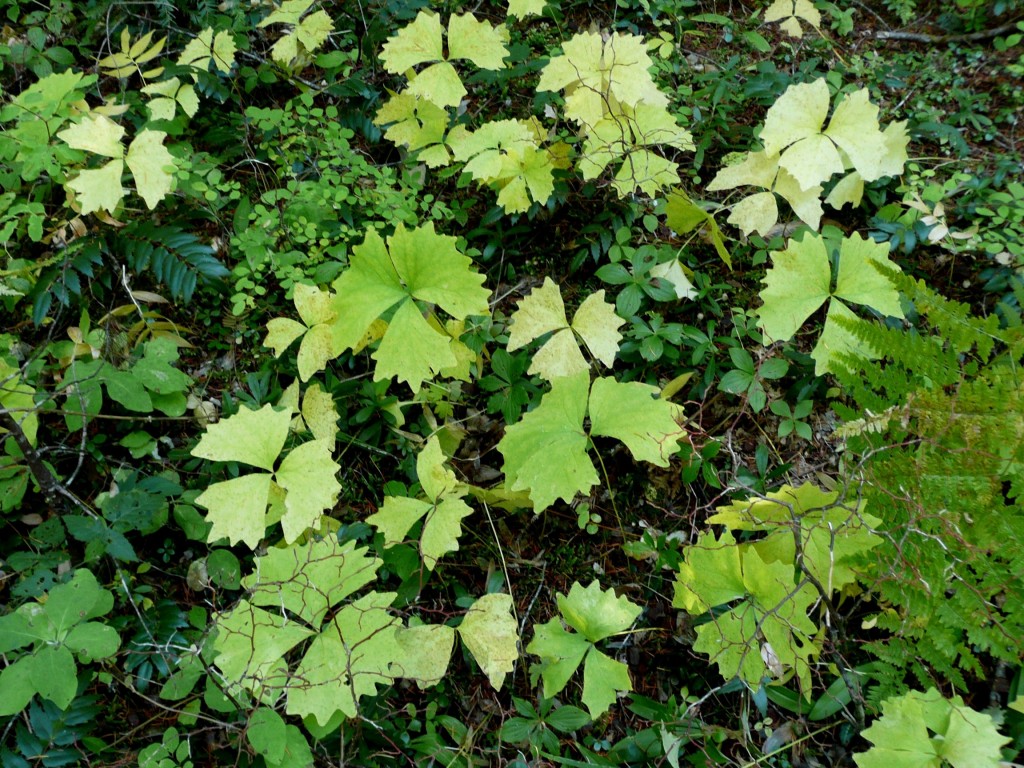
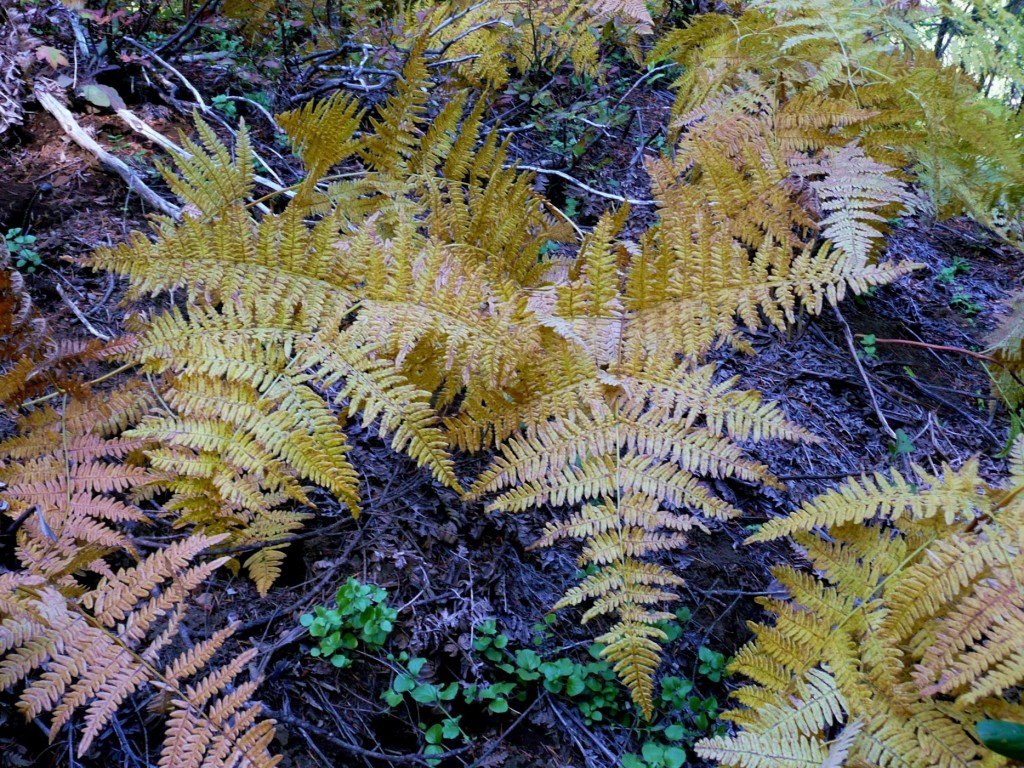


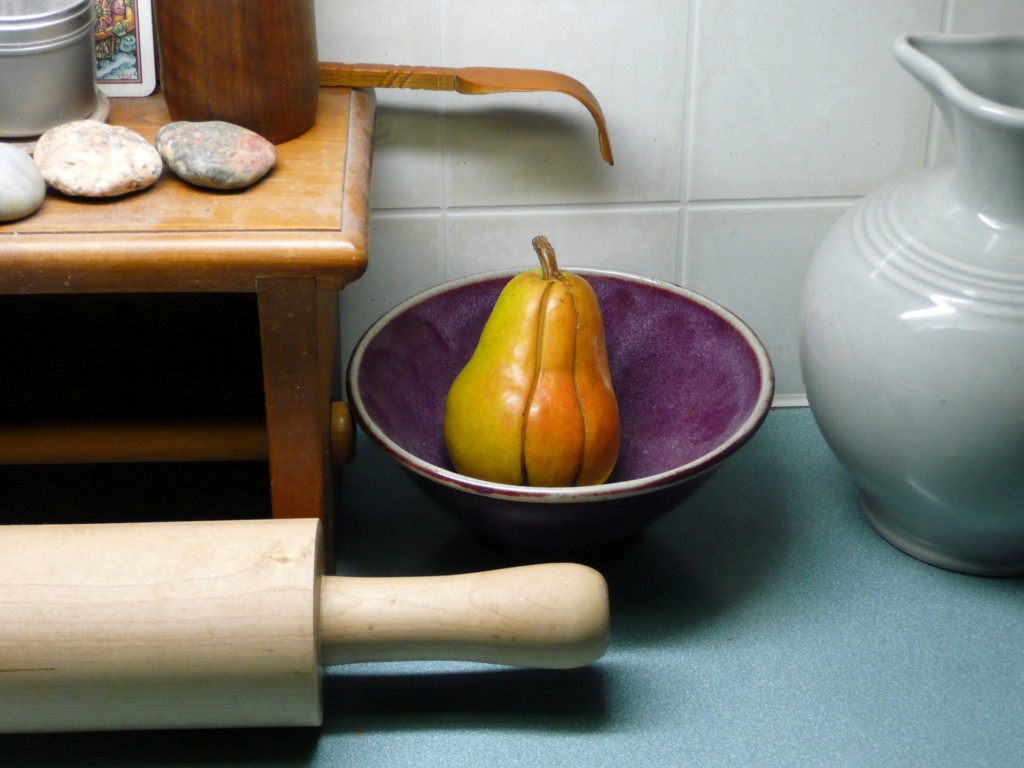

Letting the Inside Out
Sonny Landreth – South of I-10
Dedicated to my great friend, Debbie Dennison . . . painter, printmaker, woodcarver, silversmith, and more . . . who hails from “south of I-10,” Gulfport, Mississippi to be exact.

